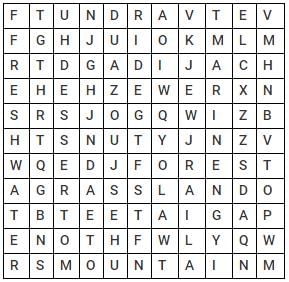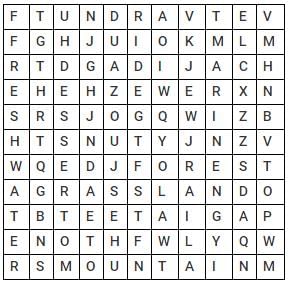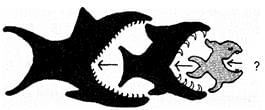Test: Ecosystem - 2 - Class 5 MCQ
20 Questions MCQ Test Science Class 5 - Test: Ecosystem - 2
What are the consumers that eat both plants and animals, called?
In which of the following eco systems the animals have thick fur coats for protection from cold?
Which of the following biomes is known for evergreen vegetation?
Directions: Study the grid below and answer the following questions.

Q. What are the number of ecosystems in the grid?
Directions: Study the grid below and answer the following questions.

Q. Which biome in the grid has a very cold season throughout the year? The vegetation in this biome mostly includes shrubs, lichens, grasses and mosses.
In an aquatic food chain, which organism is typically the primary producer?
The picture below shows a plant. In which type of ecosystem do you expect to find this?

Complete the following food chain by filling in the gap with the correct option.

Which of the following shows the proper order of a food chain?
|
42 videos|380 docs|45 tests
|




















